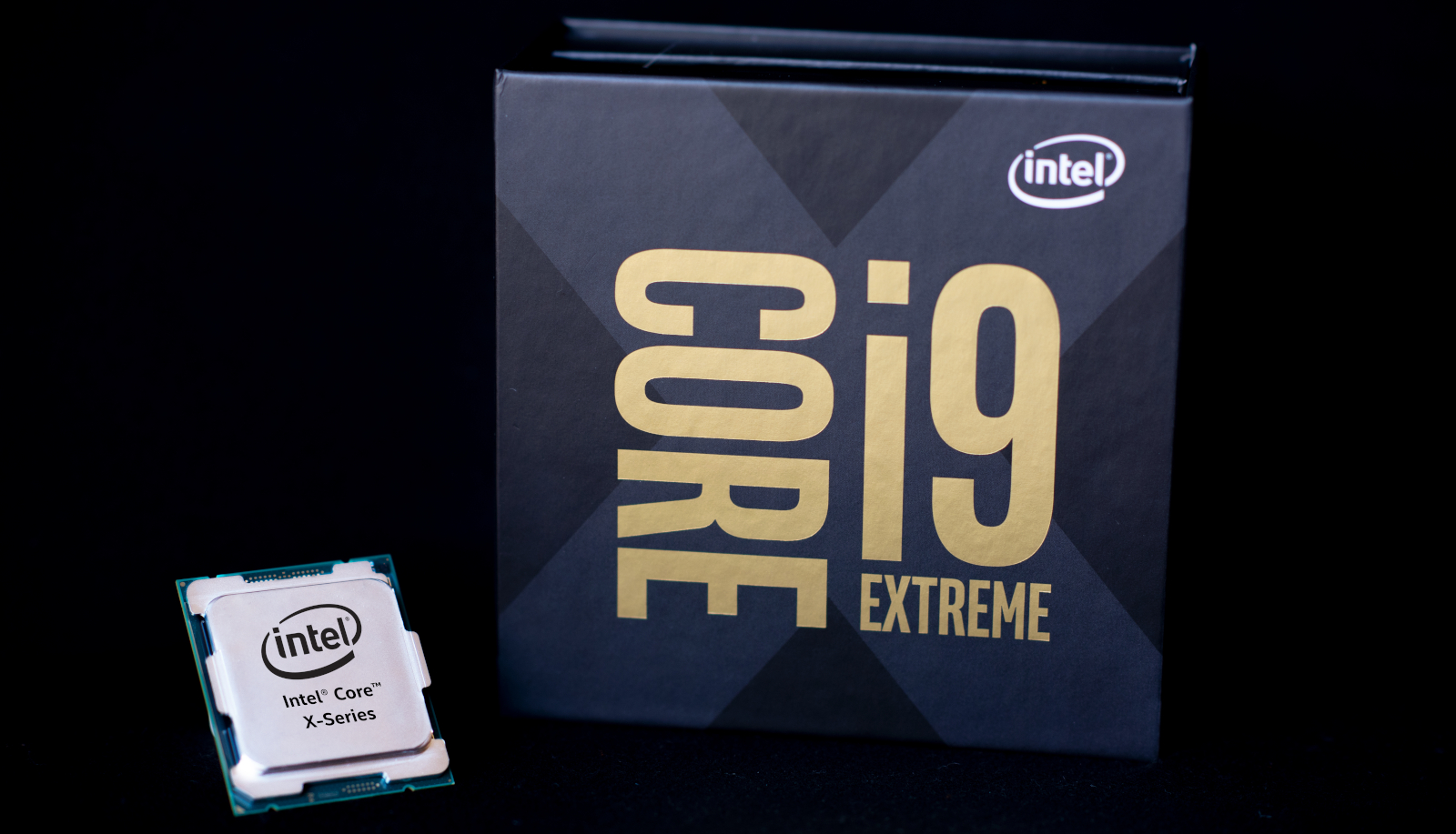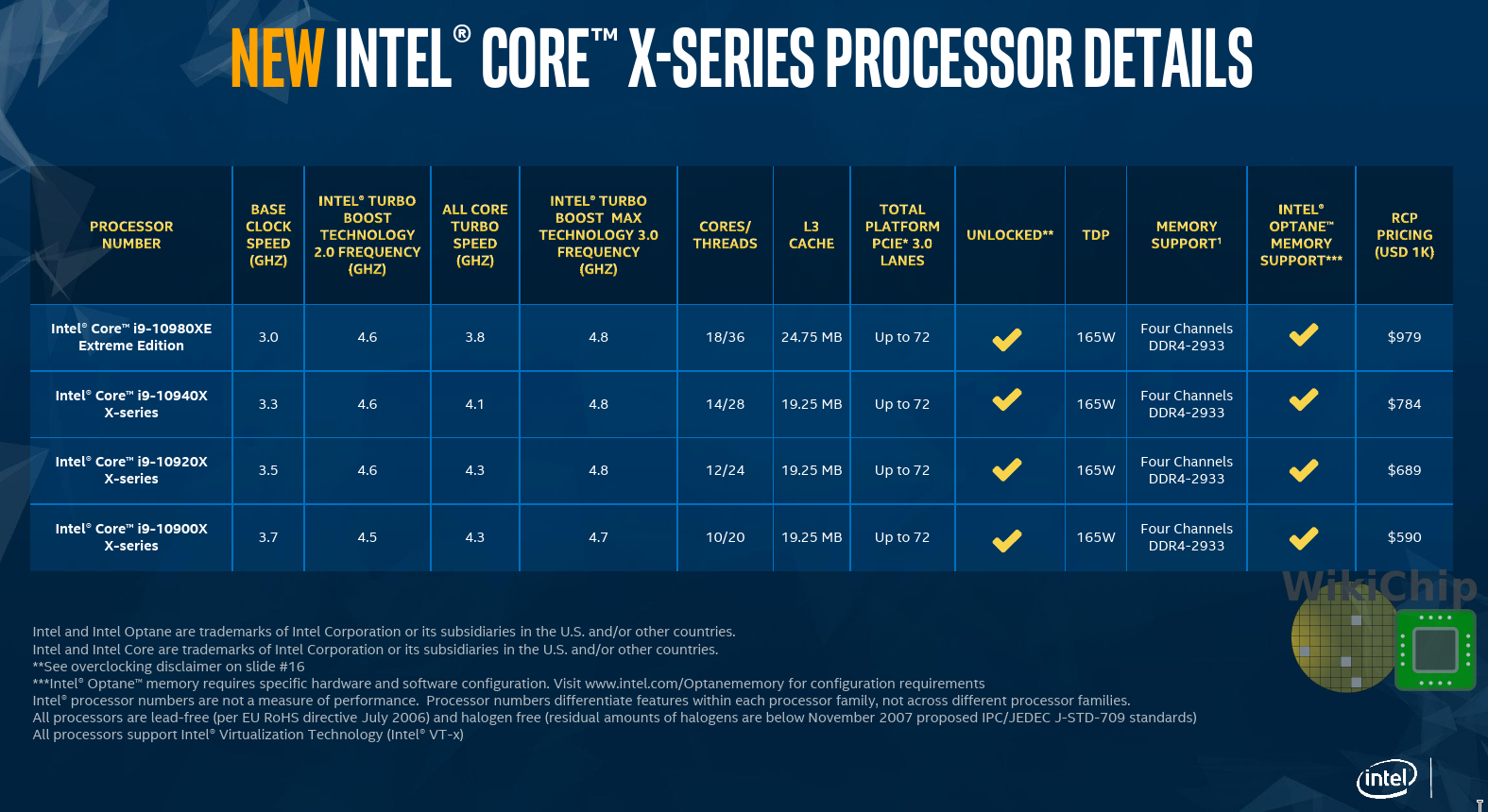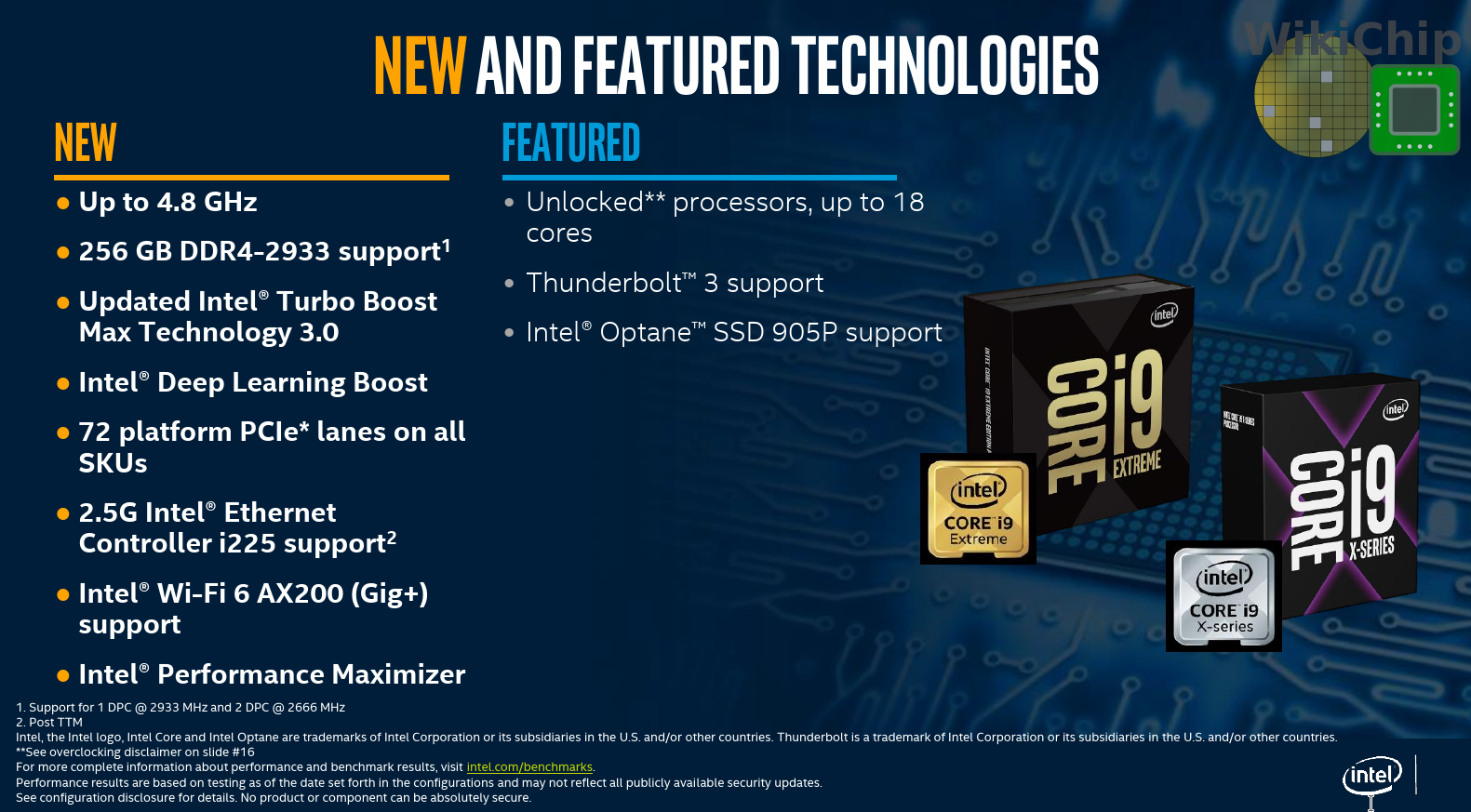Intel Launches New Core X Enthusiasts Microprocessors; Doubles The Perf-Per-Dollar
In a slightly earlier than planned, Intel is announcing its latest content creators and enthusiasts-class Core X microprocessors. The new 10000-series will directly succeed the 9000-series Skylake X refresh models from last year. The new series is based on the Cascade Lake microarchitecture, bringing a modest performance improvement via higher clock and memory frequency and a few other improvements and unique features such as an improved Turbo Boost Max Implementation and DL Boost. But beyond the actual specifications, perhaps the most important improvement in the new lineup is the pricing and the performance per dollar.
Cascade Lake X
The new series is very streamlined – comprising just four SKUs ranging from ten to eighteen cores. There are three less SKUs than last time and there is a reason for this. But before we start comparing the two generations, let’s highlight the specifications of this lineup. There are now just four processors and they are only segmented by the core count. The new SKUs are no longer artificially crippled with respect to PCIe lanes. In the prior generation, the models were artificially limited to x44 lanes, whereas here all the models now offer the full x48 PCIe Gen 3.0 lanes. Intel also improved the memory bandwidth. The new processors support up to 256 GiB (up from 128 GiB) of quad-channel 2933 MT/s DDR4 memory in a 1 DPC configuration. Note that this generation does not support Optane DIMMs, but when we asked, although Intel won’t talk about future products, it’s hinted that we should expect to see it in a future generation.
| Cascade Lake X Processors | |||||
|---|---|---|---|---|---|
| Model | Price | C/T | Base | TBT2 | TBMT3 |
| Core i9-10980XE | $979 | 18 / 36 | 3.0 GHz | 4.6 GHz | 4.8 GHz |
| Core i9-10940X | $784 | 14 / 28 | 3.3 GHz | 4.6 GHz | 4.8 GHz |
| Core i9-10920X | $689 | 12 / 24 | 3.5 GHz | 4.6 GHz | 4.8 GHz |
| Core i9-10900X | $590 | 10 / 20 | 3.7 GHz | 4.5 GHz | 4.7 GHz |
Pruning The Lineup
There are three fewer SKUs than the previous generation. Most notably, Intel eliminated the Core i7 models entirely. In the prior generation, the Core i7-9800X served as the lowest-end Core X processor with just eight cores. Since Intel introduced eight cores in the mainstream lineup, this SKU was made obsolete. Both the Core i7-9700K and the Core i9-9900K come with eight cores (the i7 doesn’t have SMT) and run at much higher frequencies while costing $200 and $100 less, respectively. And this cost is compounded when taking into account the full platform cost. Long story short, anything less than 10 cores in the enthusiasts no longer make sense, not even for Intel.
| Gen-Over-Gen Changes | ||||||
|---|---|---|---|---|---|---|
| Previous Generation | → | Current Generation | ||||
| Model | Price | C/T | → | Model | Price | C/T |
| Core i7-9800X | $589 | 8 / 16 | → | Core i7-9700K | $374 | 8 / 8 |
| Core i9-9900K | $488 | 8 / 16 | ||||
The two models that were removed from the lineup are the successors to the 10-core Core i9-9820X and the 16-core Core i9-9960X. The i9-9820X might have not made sense from a price-point point of view anymore but it’s unclear why the i9-9960X was removed. Intel says they didn’t see a need for it. We can’t help but point out that by eliminating the 16-core part, it’s no longer possible to directly compare the new SKUs to AMD’s lineup since AMD only offers 8, 12, 16, 24, and 32 cores. It’s also possible Intel has something planned and is just waiting on AMD’s launch of the Ryzen 9 3950X which has been pushed back to November.
Frequency Enhancements
On the frequency side, as one might expect from 14nm++(maybe we should add a few more +’s?), the boost frequencies have been improved. For Intel’s standard turbo boost technology 2.0 there is a 100-200 MHz improvement. The story is slightly different for the turbo boost max. In addition to a larger frequency improvement ranging from 200 MHz to 300 MHz, Intel increased the affected cores to four. Based on the stochastic properties of the die, the best four cores are chosen. The two most superior cores enjoy the full TBMT frequency with the two remaining cores capable of boosting up to 100 MHz lower. This is a fairly significant improvement. Intel received quite a bit of criticism that very few workloads are able to exploit just two cores boosting therefore with up to four cores the benefits should be more profound.
As with last year’s Core X series, all 10000-series Core X processors use solder-based TIM (STIM). STIM increases the thermal conductivity between the die and the integrated heat spreader thereby improving the available thermal headroom which should allow for higher sustained frequencies under a sufficient cooling solution – at least in theory.
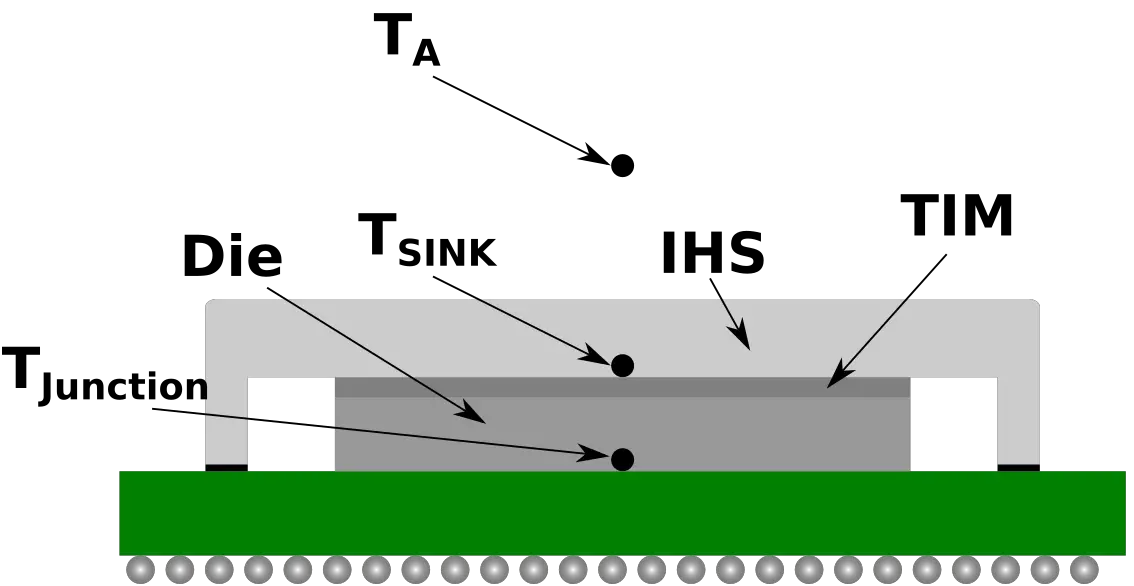
Double Perf/Dollar
Without a doubt, the biggest improvement is the performance-per-dollar which nearly doubled. Last gen flagship 18-core Core i9-9980XE was priced at $1,979. The new Core i9-10980XE is priced at $979, $1000 dollars less. The rest of the SKUs have similar reductions in price.
| Gen-Over-Gen Changes | |||||||
|---|---|---|---|---|---|---|---|
| Previous Generation | → | Current Generation | Δ | ||||
| Model | Price | C/T | → | Model | Price | C/T | |
| i9-9900X | $989.00 | 10 / 20 | → | i9-10900X | $590 | 10 / 20 | -$399 (-40.3%) |
| i9-9920X | $1189.00 | 12 / 24 | → | i9-10920X | $689 | 12 / 24 | -$500 (-42.1%) |
| i9-9940X | $1387.00 | 14 / 28 | → | i9-10940X | $784 | 14 / 28 | -$603 (-43.5%) |
| i9-9980XE | $1979.00 | 18 / 36 | → | i9-10980XE | $979 | 18 / 36 | -$1000 (-50.5%) |
In terms of price/core, the current lineup is almost identical to AMD’s Colfax Threadripper series, at roughly $55/core. Together with the rest of the specifications such as higher frequencies, Cascade Lake X is currently a competitive product price-wise. It’s worth noting that AMD is planning a new generation of Threadripper in just over a month. The only question remaining is whether the adjusted pricing will remain competitive.
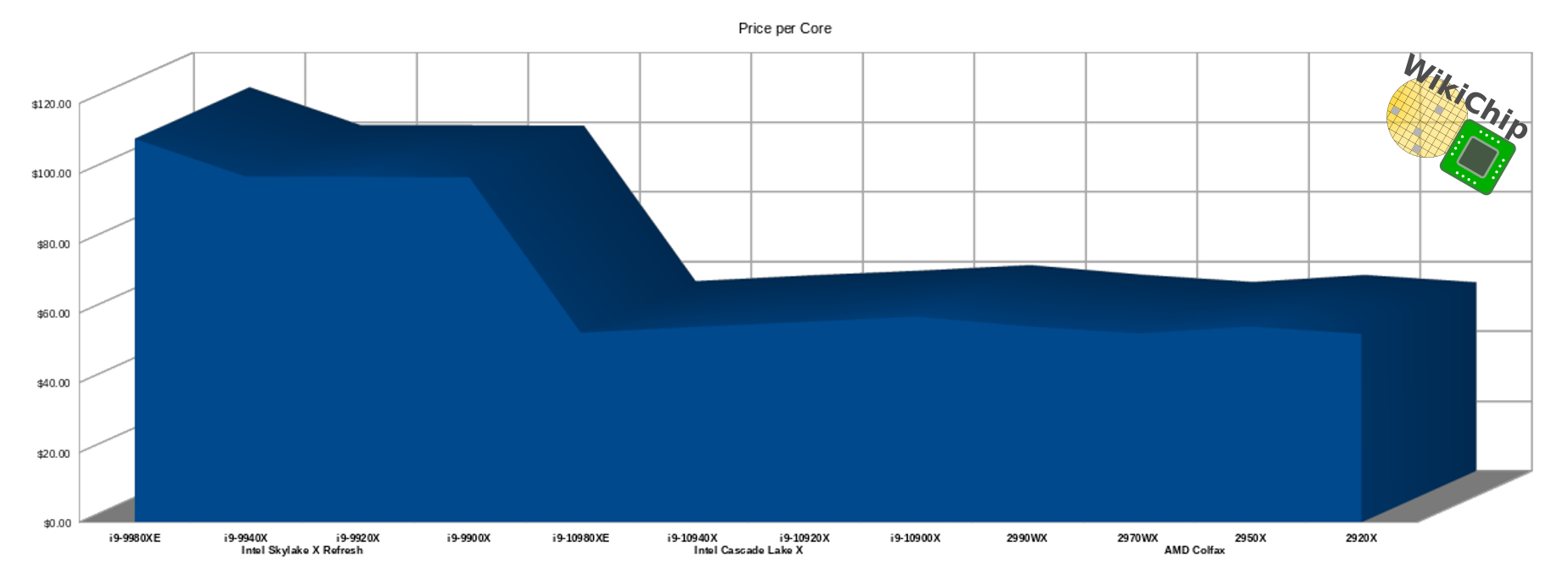
New Features
Taking a few steps back and looking at the whole platform, Intel is introducing a number of new features at the platform level via the chipset and external controllers. In total, the platform supports up to 72 PCIe lanes with 48 coming from the CPU and 24 additional lanes from the PCH. This is also the first time Intel announced 2.5 GbE controller support. Intel says more information regarding this will follow in a future announcement.
Cascade Lake-X processors will be available in November.
–
Spotted an error? Help us fix it! Simply select the problematic text and press Ctrl+Enter to notify us.
–

